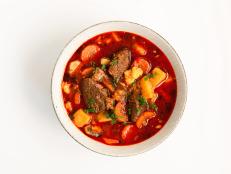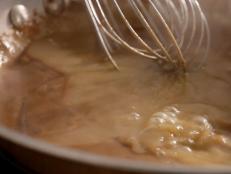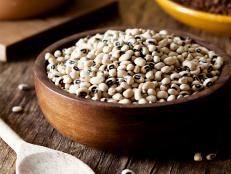In Other Important Questions: What Is Spam Made Of?
The blue can is iconic. But what’s inside?
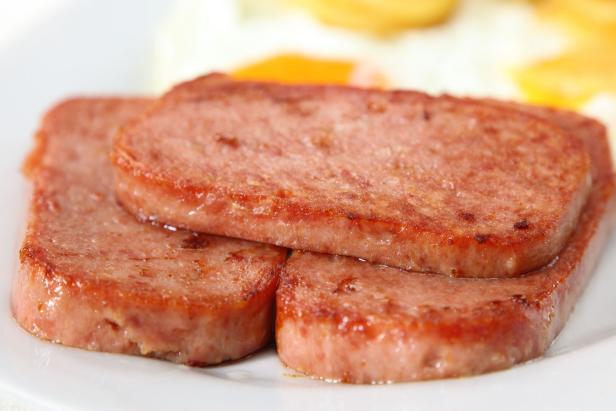
dirkr/Getty Images
By Fraya Berg for Food Network Kitchen
Fraya is a chef and a contributing writer at Food Network.
Many people are in the dark about what’s in the Spam can. Bet you also didn't know this: Spam has been made with the same recipe since 1937, with just 6 simple ingredients. World War II and the Korean War spread the lunchmeat from Hormel Foods around the world where it is still revered.

rubberball/Getty Images
What Is Spam Made Of?
What sets Spam apart from other products that are made from chopped meats that are cooked and pressed together (we’re thinking about scrapple): Spam is made from pork shoulder and pork ham, with no other scraps from the hog.
Pork shoulder is considered a high-quality cut of pork today, although in 1937, it was not. Pork shoulder is sold in the supermarket and many people braise it until it becomes fall-apart tender. Pork shoulder is what sausage is made from because it has the perfect ratio of meat to fat to make the very best sausages. Shoulder meat is what a pork steak is called when it’s sliced and grilled in St. Louis.
The other meat that’s added is ham: like what you get at the deli and make into a sandwich.
And the four remaining ingredients include salt, potato starch to bind the meat together and retain moisture, pure sugar - no syrups - and sodium nitrite to preserve the meat.
What Does Spam Stand For?
This is the kind of question we love, because sometimes there just isn’t an answer. Some people think is stands for special processed American meat. Some say it’s a mash up of the words "spice" and "ham", except that’s odd, because there weren't any spices in original Spam. Another story is that there was a contest to name it at a New Year’s Eve party, and after a few toasts, someone shouted "Spam!" and the name stuck. We’ll let you decide which story you think is best, and you can go with that one.
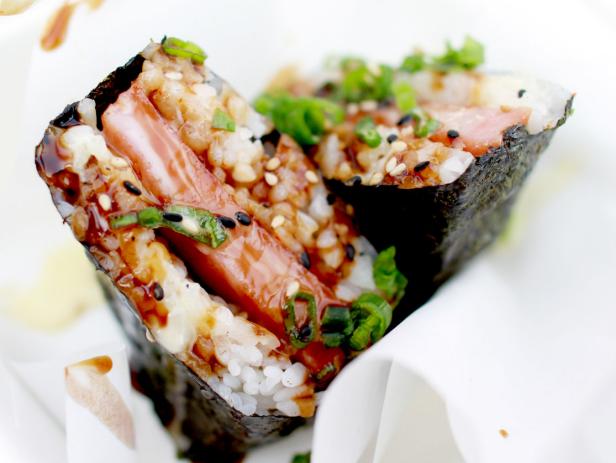
RocksterWho/Getty Images
The Impact WWII and the Korean War on Spam
In World War II, the U.S. bought 150 million pounds of Spam. It was the only meat that could last the long boat trips to Hawaii and Guam. And while the U.S. troops grew to dislike the meat, spreading this sentiment back home, the tradition of eating Spam in took off in Japan and Hawaii. During the Korean War, Spam was introduced to the country by the U.S. soldiers stationed there and is still very popular.
The Asian influences of these cultures have led to Spam Musubi and Spam Fried Rice, which today are two of the top Spam-related recipe searches on Google. And when you scroll down, you’ll see that we have recipes for both. If you want to branch out, Spam comes in 14 flavors.

LauriPatterson/Getty Images
Ways to Enjoy Spam
Musubi is rice with Spam wrapped in the nori seaweed used for sushi drizzled with a sweet soy sauce popular in Hawaii. It can be as simple as that or elevated with sesame seeds, scallions or teriyaki sauce.
In Japan, a runny egg is a common topper for a bowl of noodles. Since Spam and eggs are a perfect pair, adding Spam to a noodle bowl is a given.
And just about everywhere, Spam and eggs is a breakfast staple.
Spam Recipes
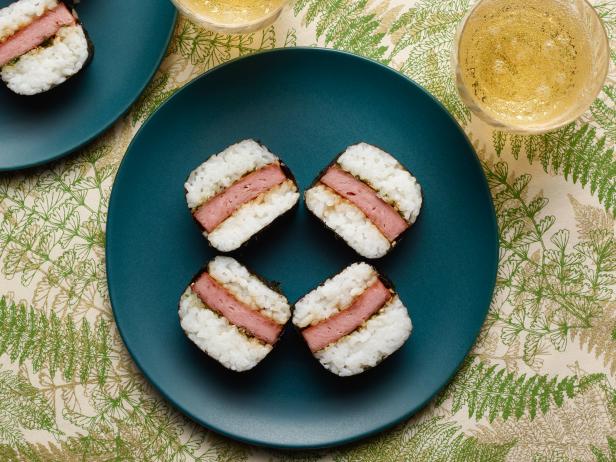
Renee Comet
Musubi with Spam is everywhere in Hawaii. The sugar-soy sauce glaze adds the sweet-salty note that goes so well with the Spam and the rice.

This dish has so many elements that are standouts in their own right that bringing them together is a flavor explosion.

Pulled pork made from scratch is the topper for the fried Spam slice. Serve the slaw on the slider or on the side.
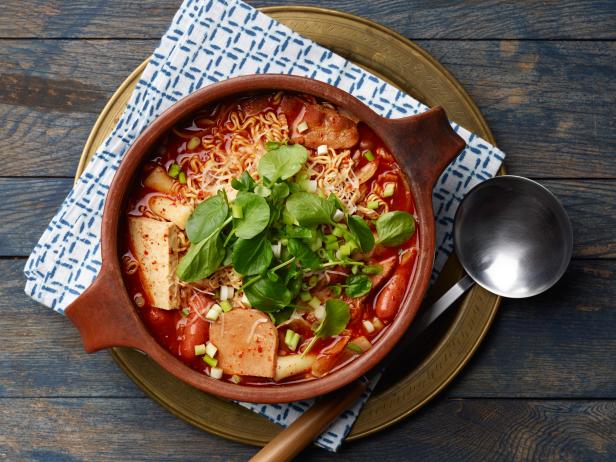
Renee Comet, © 2016, Television Food Network, G.P. All Rights Reserved
Budae Jjigae is a Korean hot pot dish that morphed after the Korean war when food was scarce. Spam was readily available, and put to good use.
Related Links:

























